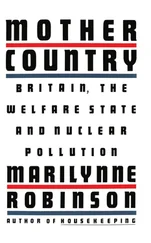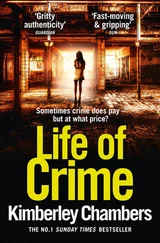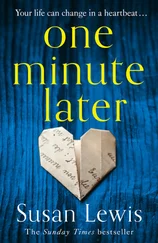In practice creeping decontrol took time to take effect. Initially evictions were few, rent increases limited. At the end of 1958, the Manchester Guardian judged the Act to be working: ‘The general expectation seems to be that the Act will, as promised, make rather more accommodation available.’ 53Particularly in London, however, the demographic pressures continued to mount. The service industries, growing rapidly in the age of affluence, were pulling low-paid workers into the capital, among them West Indian immigrants encouraged to Britain to boost the labour supply. At the same time, slum clearance ahead of rebuilding was diminishing the stock. Housing shortages were growing. By 1960 and 1961, rents were rocketing on renewal, homelessness was rising, bishops started to march, and the ministry found it had no decent figures on the private rented sector with which to fight back against the numbers that social scientists at the LSE headed by David Donnison were collecting. These showed that the private rented sector was still shrinking, while the rate of repair was not improving. 54
Slowly and increasingly explosively, housing became a media story. What made it detonate in 1963 was Perec Rachman. A Polish immigrant after the war, he had started in 1954 buying up the ends of leases in big multiply-occupied houses in Notting Hill and other parts of west London. His methods of shifting tenants out of unfurnished rooms so that he could re-let them, nominally furnished and at uncontrolled rents, were never too gentle. Faced with a house full of statutory tenants paying protected pre-war rents, Rachman would combine racial prejudice with business, according to the Sunday Times account which eventually revealed his methods. He would let one room to eight West Indians, ‘all accomplished musicians’, and tell them he liked parties. Within three months the ‘stats’ – statutory tenants – would have left, replaced by ranks of West Indian immigrants or poor whites, desperate for housing and paying uncontrolled furnished rents amid appalling overcrowding. Alternatively, the house would be sold vacant for five times the sum Rachman had paid for it. 55If tenants refused to move, the heavies – ex-wrestlers and boxers – would be sent in. On one occasion, Rachman simply took the roof off a house when some tenants refused to leave. Others were intimidated, physically assaulted, had their furniture destroyed, or found that all-night ‘clubs’ had been established in their basements. In St Stephen’s Gardens, Paddington, residents and tenants famously fought back, once flooding one of the clubs to close it and on another occasion sawing up a staircase and electrifying it with metal fittings to prevent Rachman’s roadies evicting a couple. 56Attempts by the police and local and public health authorities to deal with him were defeated by a web of holding companies so complex that it was never finally established how many properties he owned, although the minimum estimate at his peak in 1959 was 150 involving at least 1000 tenancies. 57
Rachman had been at work since the mid-1950s and indeed had died in 1962. The fuse that was to explode his name into a permanent place in the English language was the knowledge held by one of his firmest opponents, Ben Parkin, the Labour MP for Paddington, that Mandy Rice-Davies had been his mistress. When Rachman’s name came up in one of the court cases around the Profumo affair in 1963, Parkin pounced – injecting Rachman, housing and intimidation into the already fetid tale of Mandy Rice-Davies, Christine Keeler, and the Secretary of State for War who had shared his mistress with a Russian spy. With Rachman dead, the libel laws which had held back his full exposure no longer applied and the link to Profumo provided scintillating topicality and a fresh breath of life to a fading story. A month’s worth of media exposure resulted, running on into the summer ‘silly season’ when newspapers are short of news. Rachman, his methods, and the state of London housing were suddenly the issue.
Even The Times went graphic. It described:
A young girl, near to tears … [in] the pitifully small room in which she and her husband had to live. There was no water, except for a cold tap in the backyard down three flights of dark rickety stairs. The one lavatory for the 11 people in the building was too filthy to use. Cooking facilities had to be shared. The house was rat-infested and the walls so ridden with bugs and beetles that the girl was afraid to replace the ancient wall-paper which helped to some extent to keep them from crawling into the room. 58
Labour went to war. Harold Wilson, recently elected leader of the party, launched into the Tories over Rachman and the rent increases the Act had caused. The government’s response, that Rachman had been at work before the 1957 Rent Act and that housing shortages, not the Act, were the root cause, cut no ice. All ministers could promise was an inquiry, the Milner Holland report which did not emerge until 1965. ‘Rachmanism’ became such an integral part of the language that twenty-five years later, when Nigel Lawson announced that tax breaks in the Business Expansion Scheme could be used to provide new rented housing, Gordon Brown, Labour’s Treasury spokesman, felt only the need to label it ‘state-subsidised Rachmanism’ in order to condemn it. 59It mattered not that Milner Holland finally estimated that only 1 per cent of London tenants were facing abuse and intimidation, or that its surveys showed that well over 80 per cent of tenants and in some cases more than 90 per cent were satisfied with their landlords. As Keith Banting put it, ‘the balance in the housing debate had shifted decisively’. 60Landlords were bad, tenants were exploited. It was one of the messages which helped Labour to its 1964 election victory.
Richard Crossman promptly replaced the Conservative legislation with Labour’s own Rent Act. It restored security of tenure, created ‘fair rents’ with rent tribunals to hold the ring between landlords and tenants, and allowed three-yearly rent rises. After all the Sturm und Drang over the 1957 Act, it was to prove a remarkably bipartisan piece of legislation. Crossman, despite in the 1950s being seen as a firebrand of the left, had in 1960 himself been instrumental in quietly killing off Labour’s policy for the mass municipalisation of rented housing. His Rent Act in the end attempted to strike a real balance between landlord and tenant, rather than deliberately driving the private landlord out of business. As a result housing finally emerged in the mid-1960s as defiantly not a mass social service. Rather it was a firmly mixed economy, with Crossman’s measures including encouragement for home ownership as well as a renewed council housing drive. It remained, however, a mixed economy in which the returns from owning housing for rent remained too small to be attractive. The private rented sector continued remorselessly to shrink.
Meanwhile the Rent Act experience had caused the Ministry of Housing itself to lose faith in the private rented sector. Its civil servants were now headed by the formidable Dame Evelyn Sharp, described by Macmillan as ‘without exception the ablest woman I have ever known’ 61and by Crossman as ‘like Beatrice Webb … in the sense of wanting improvement and social justice quite passionately and yet a tremendous patrician and utterly contemptuous and arrogant, regarding local authorities as children which she has to examine and rebuke for their failures.’ 62She had wanted no more truck with Labour’s 1959 policy of municipalisation than Crossman. Equally, however, she believed it ‘very doubtful’ whether ‘the growing division of society into council tenants and owner-occupiers can be satisfactory’. 63By the early 1960s her department’s officials were casting around for another private supplier of housing. Their answer after visits to Scandinavia was the non-profit-making housing association. Sir Keith Joseph, ever willing to experiment, invested £25 million in a pilot project in 1961 and in July 1963 a dozen two-bedroom flats in Birmingham became the first housing association homes to take in tenants. 64Publicly funded, but independently provided, housing associations became the very first of a new type of body, neither traditionally state-owned nor strictly in the private sector, but used by the state as its agent: a very early version of a model that by the early 1990s and much adapted would include grant-maintained schools and NHS Trusts. In the dying weeks of the Conservative Government, Sir Keith, battered and bruised by Rachman, announced the first £100 million loan to the newly formed Housing Corporation to expand the idea.
Читать дальше
![Nicholas Timmins The Five Giants [New Edition]: A Biography of the Welfare State обложка книги](/books/701739/nicholas-timmins-the-five-giants-new-edition-a-cover.webp)











